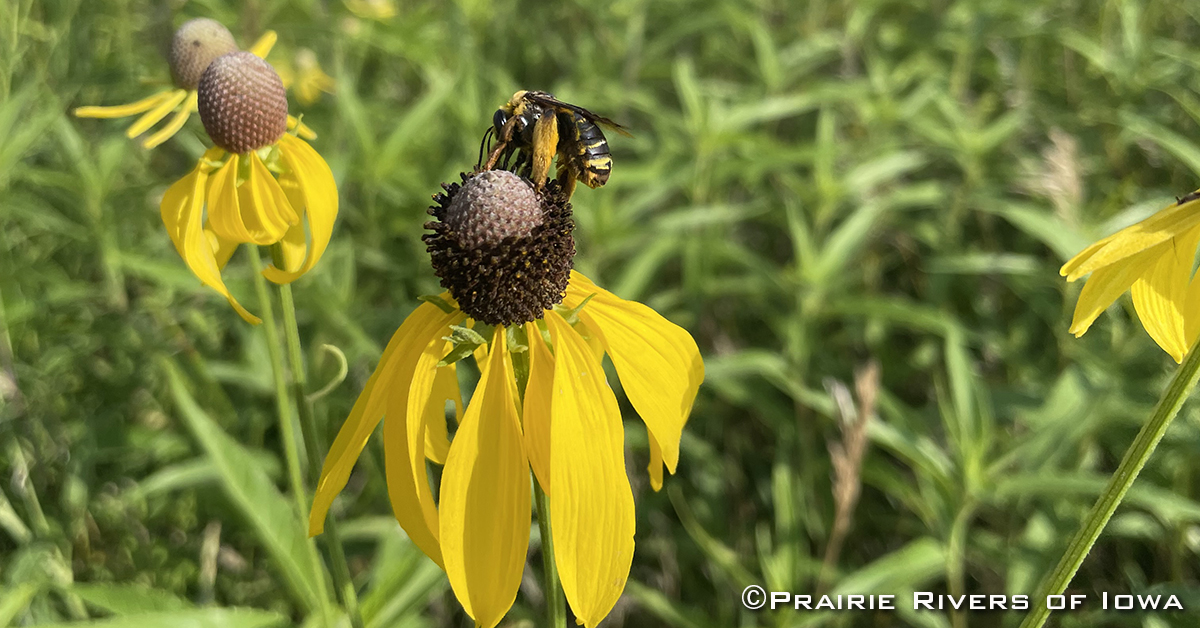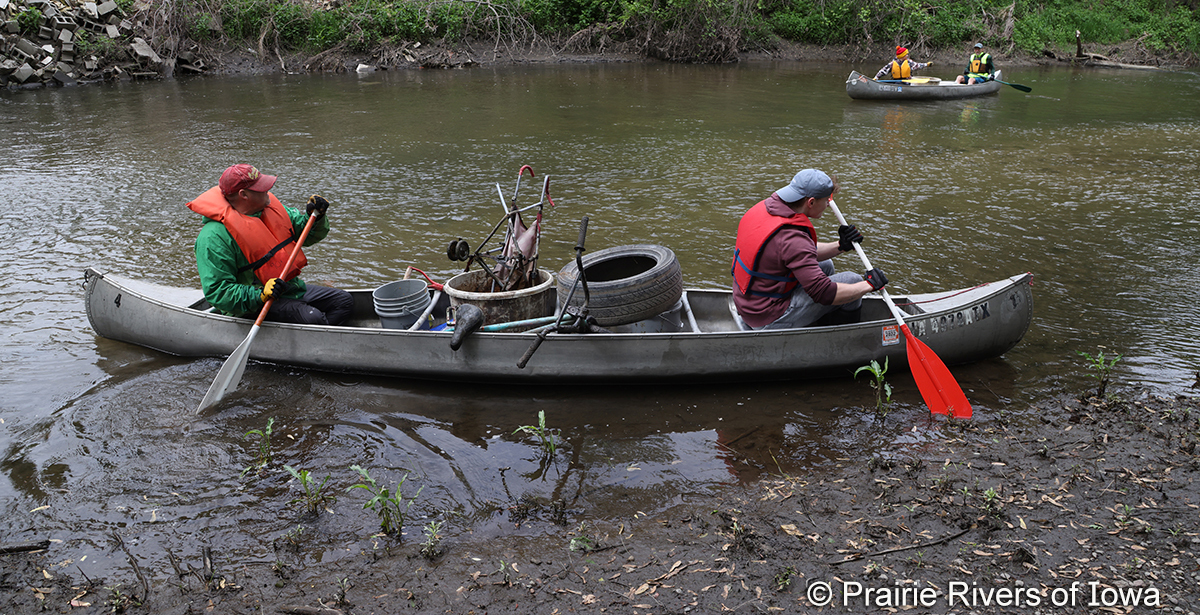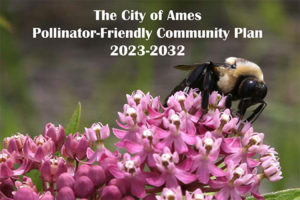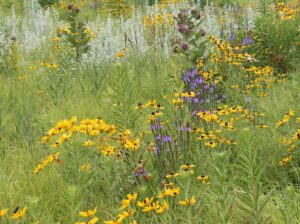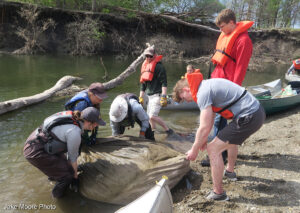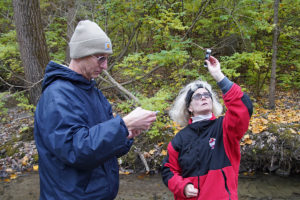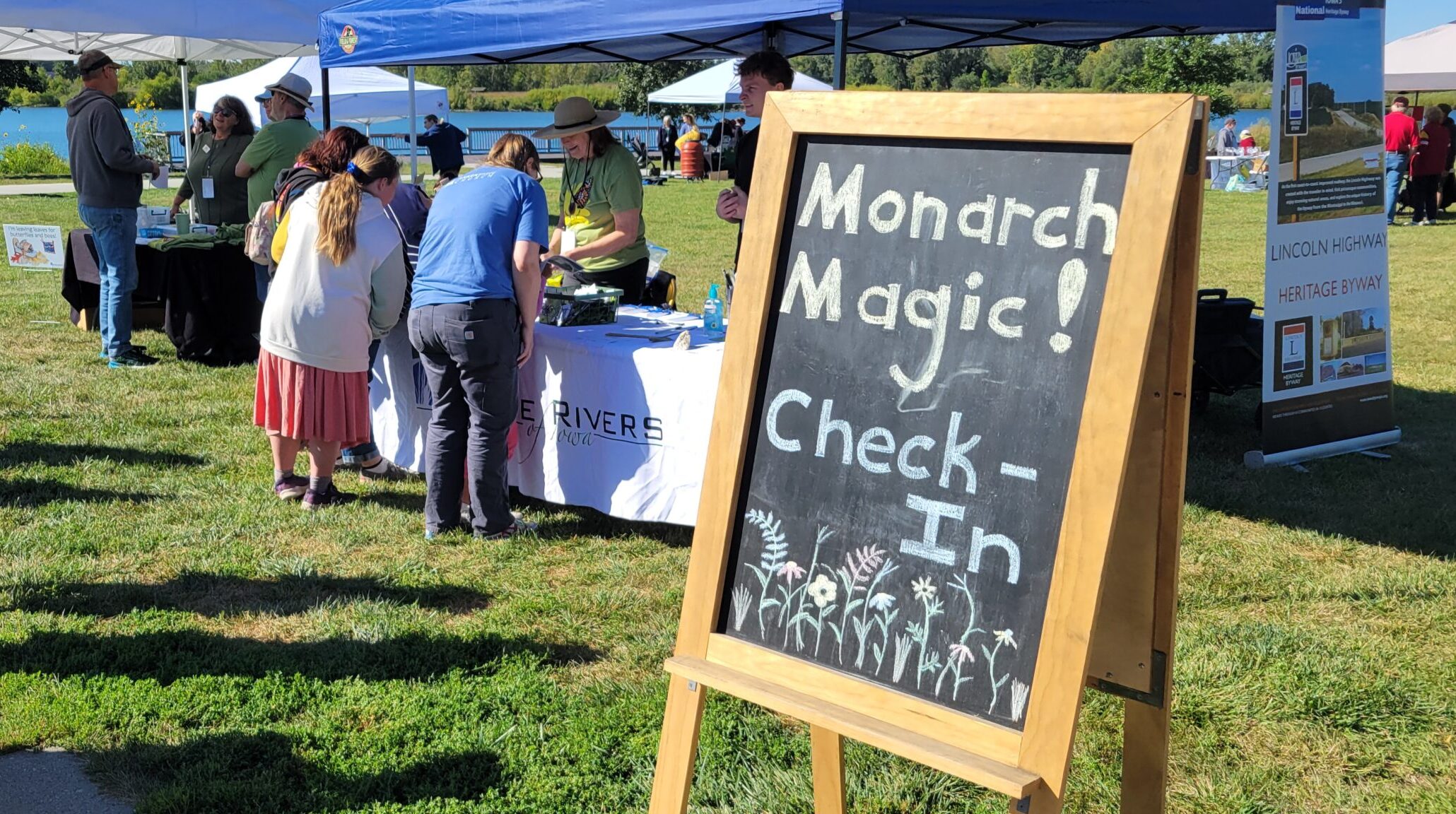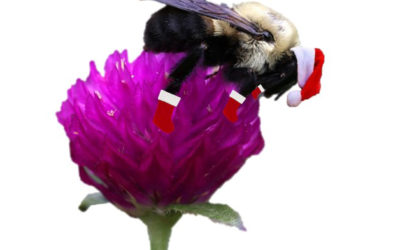Watersheds and Wildlife
The Watersheds and Wildlife Program works to improve water quality in rivers and lakes and to restore habitat for the 100 species of butterflies and 400 species of bees found in Iowa. We accomplish this work through robust education and monitoring, and by partnering with both private landowners and local government.
What’s a watershed? Confused about water quality? Here’s an FAQ with links to some of our most accessible resources.
Past projects have focused the Ioway Creek and Skunk River watersheds in Story, Boone, and Hamilton counties.
Here is what we’re up to now:
Ames Pollinator-Friendly Community Plan
Prairie Rivers and the City of Ames have a vision to become a leader in developing and sustaining pollinator habitat that will enrich the quality of life for the people and wildlife of Ames.
Prairie Seed Bank
Creek Cleanups
So far, we helped organize six volunteer events that removed over 12,700 pounds of trash from Ioway Creek, the Skunk River and other streams in central Iowa. Depending on the weather, we may be walking, wading, or paddling canoes, but it’s always a good time! Keep an eye on our Events page–we usually plan one for late April or early May.
Water Monitoring in Story County
Water quality in most creeks and lakes in Story County is not tested by state agencies, so in 2020 we worked with 9 partner organizations to plan for how we could sustain a monitoring program at the local level. Prairie Rivers continues to support the effort by collecting samples, organizing volunteer events, and making sense of the data.
Environmental Education and Community Events
Monarch Magic is an annual monarch tagging and educational event in Ames aimed at families. We also participate in tabling events and regularly give talks about water quality, pollinators, and conservation to community groups around the state.
Educational Videos
Conservation Connection Blog
A big part of our work is telling engaging stories to help explain the science and policy behind the environmental issues we work on. Here are three of our latest posts from the Conservation Connect Blog. We’ve also compiled some of our most accessible content related to soil and water (which can get complicated) as an FAQ.
You can lead a horse to water…
Reflections on the 50th anniversary of the Clean Water Act and a messy case study from the Cedar River.
How to Plant a Prairie Strip: One Landowner’s Journey
“Prairie strips [are] one of the best ways farmers can get into conservation practices and habitat building” David Stein said when I asked him about this project, “You’re taking unproductive land out of intensive use and replacing it with a small area that provides amazing benefits for the farm and surrounding environment.” For Chuck, some of those benefits include a reduction in run-off and erosion, increased water infiltration, and of course the perennial beauty of native prairie and pollinators where there was once just grass.
Which Insects are “Home for Christmas”?
Insects are conspicuous by their absence during Iowa’s winter months. Absent are the beauty of butterflies, and we would be shocked to hear a bee buzzing around our snowy apartment balcony on Christmas Eve. So where did they all go? Did they perish from freezing temperatures? Have they all migrated south with the eastern Monarch populations?
Here in Iowa, we have many insects that use truly astonishing techniques to stay here throughout the winter, braving the cold with the rest of us. From smart hiding places and suspended animation to making their own antifreeze, Iowa’s insects have developed some pretty wild adaptations to weather the winter!
Katelyn Rinicker
Pollinator Conservation Specialist
Dan Haug
Water Quality Specialist





